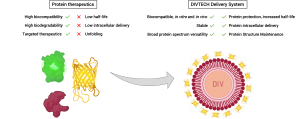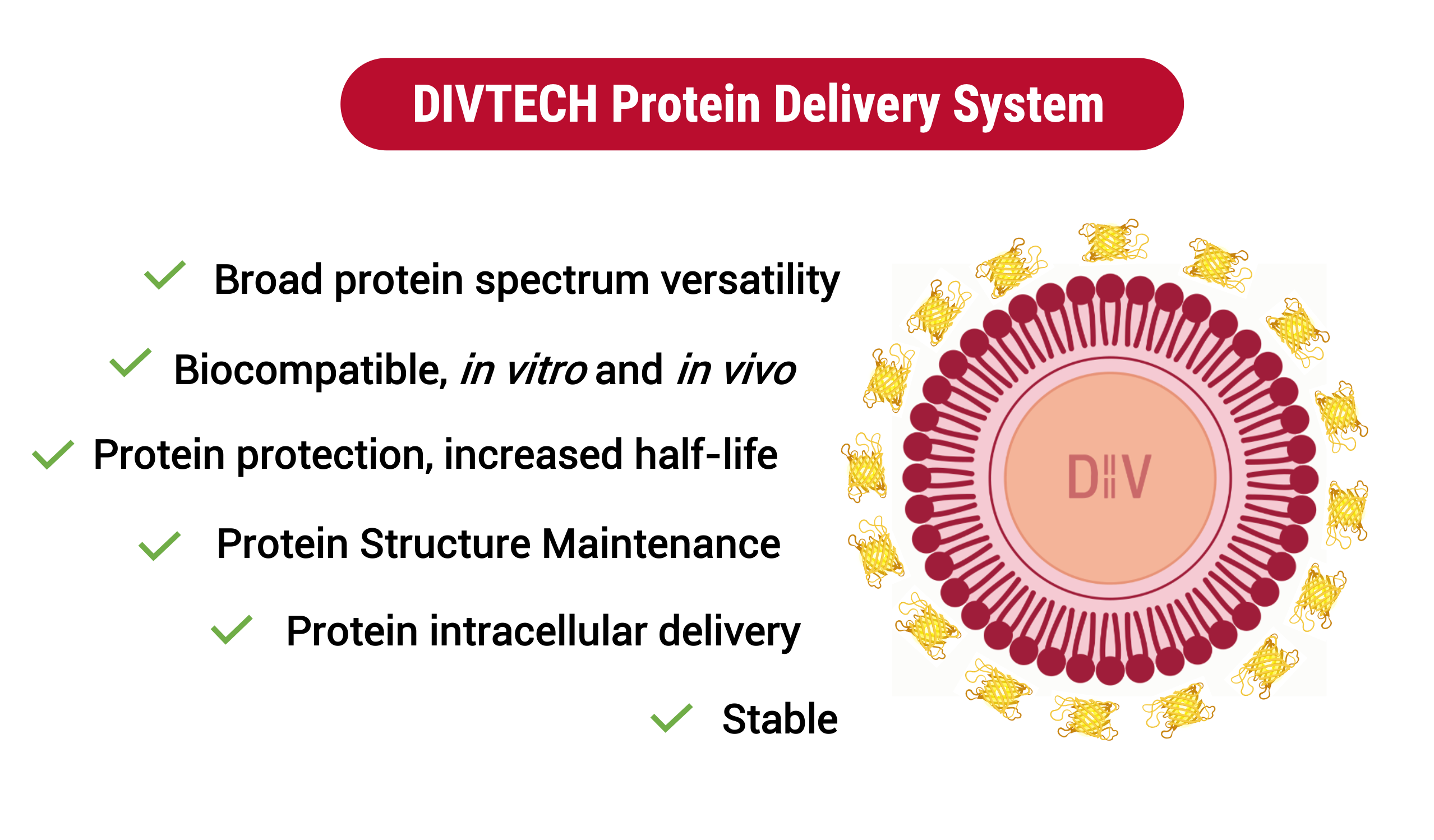The potential of proteins for the treatment of diseases
Protein therapeutics represent a powerful field for the treatment of many diseases, having shown its potential for several years; especially since the ‘boom’ of recombinant protein production. When compared to traditional small molecule therapeutic approach, proteins bring both high biocompatibility and biodegradability. These facts are associated with a high safety profile. When considering activity, proteins present a much more targeted activity, directly related to their specific interaction with the target of interest. However, these molecules can suffer from unfolding and short half-life, due to enzymatic degradation, all associated with loss of activity. Their poor membrane permeability impede the intracellular delivery. All these drawbacks can be overcome using delivery vehicles that can carry, protect, and deliver the cargo.
What types of nanoparticles can be used for protein delivery?
Among the different types of formulations that can be used to carry proteins (i.e., hydrogels, fibers, microporous scaffolds, or films), micro- and nanoparticles represent a potential approach to achieve targeted and controlled protein release. The term nanomedicine comprises formulations in the nanometer scale composed of organic materials such as lipids or polymers, or inorganic materials such as metals.
DIVTECH is a lipid-based nanoemulsion technology which has the potential to associate a broad spectrum of proteins. It is mainly composed of two excipients, which are naturally present in the body, thus, providing high biocompatibility and safety profile. The association of proteins to this technology has been performed using two strategies: the use of cationic components and a novel strategy developed in our laboratory which is not pI/pH dependent. Click here to know more.
What can DIVERSA offer?
As mentioned above, the use of a suitable delivery vehicle can enhance protein delivery and significantly increase their therapeutic potential. In this sense, DIVERSA offers the following aspects:
Efficient intracellular delivery
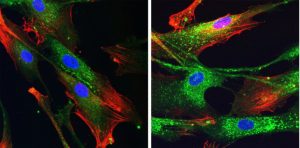
Figure 1. Cell internalization in fibroblast of DIVTECH labeled with FluoGreen observed under confocal microscopy after 2 hour incubation. Blue: nuclei, red: fibronectin, green: DIVTECH.
The physicochemical nature of most proteins impedes endocytosis and of course, passive diffusion across cell membranes. Like so, protein therapeutics is then restrained to extracellular or membrane targets, leaving aside a whole package of potential druggable targets. In this sense, the use of nanoparticles would broaden up the use of proteins which normally would not be able to cross cell membranes.
In order to provide a solution to this, and with the aim of being able to track the protein of interest in cell-based assays, DIVTECH FluoGreen Protein and DIVTECH FluoGreen Anionic Protein/Peptide Kits were conceived. They are specifically designed to help the user to visualize the delivery of the protein of interest by a wide variety of fluorescent platforms (flow cytometry, microplate assays, fluorescence and/or confocal microscopy) in less than two hours at Ex/Em = 495/503 nm (Figure 1).
Maintenance of protein activity
This is, of course, the one of the most important steps to consider if the technology is fulfilling its purpose. From this point of view, DIVTECH Protein Kit has shown it is capable of delivering a wide range of proteins such as b-galactosidase, Anakinra or RLuc, among others, without a loss of activity.
Low Toxicity
An important factor that needs to be well-established and understood is the toxicity of the drug delivery vehicle. From this point of view, particles containing cationic lipids (i.e., lipids used to complex the proteins) need to be carefully designed to minimize cell cytotoxicity at the required doses. In this sense, our Anionic DIVTECH has been exquisitely characterized to achieve the best outcomes without causing cell toxicity (Figure 2).
Similarly, our , DIVTECH Protein Kit, which does not use a cationic lipid strategy, has also shown improved results when compared to competitor. The β-Galactosidase activity (blue signal) is significantly enhanced when delivered by DIVTECH and showed no toxic effects as compared to commercially available competitors where cell debris and changes in the cell morphology are observed.
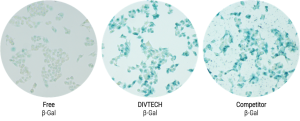
Figure 2. Intracellular delivery of the enzyme β-Galactosidase to L3.6pl cells using DIVTECH.
Above all of this, the use of delivery vehicles in vivo is again an important factor to consider when choosing a delivery platform. In this sense, many delivery technologies designed for research are not able to fully satisfy the doses required. By contrast, DIVTECH showed great biocompatibility in mice at both 30 and 60 mg/kg doses in single and consecutive tail vein injections.
Versatility
The use of cationic lipids as complexing agents is a very well-known and established strategy, however, it is also, by nature, limited to anionic proteins at physiological pH7,4 (i.e., proteins with a pI < 6). However, reporter proteins such as Luciferase or GFP are positively charged at pH7,4. Like so, DIVERSA Protein Delivery Kit , is designed to overcome this important drawback, as it is not isoelectric-point (pI) dependent, broadening the use of this same kit for any kind of protein.
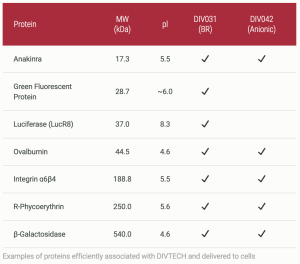
Do you have a potential therapeutic protein but you lack of an effective delivery strategy?
Try our DIVTECH KITS:
The best way to have a first contact with our technology is without a doubt trying our KITS, especifically designed for this purpose and with a user friendly metholody. However, this does not mean that we can’t help you with any questions that you may have regarding your protein. Try one of our kits now and get 50% discount for your First-Time Order! Please, don’t hesitate to contact us to order your DIVTECH kit or if you need further guidance.

Establish a Co-Development Agreement:
We understand that you may wish to have a more personalized approach, and for this reason, we have created the Co-Development Agreements! In this case, we would build up a specific project for your specific project.
You can contact us or write an email to info@diversatechnologies.com. We are looking forward to helping you with your molecules!
